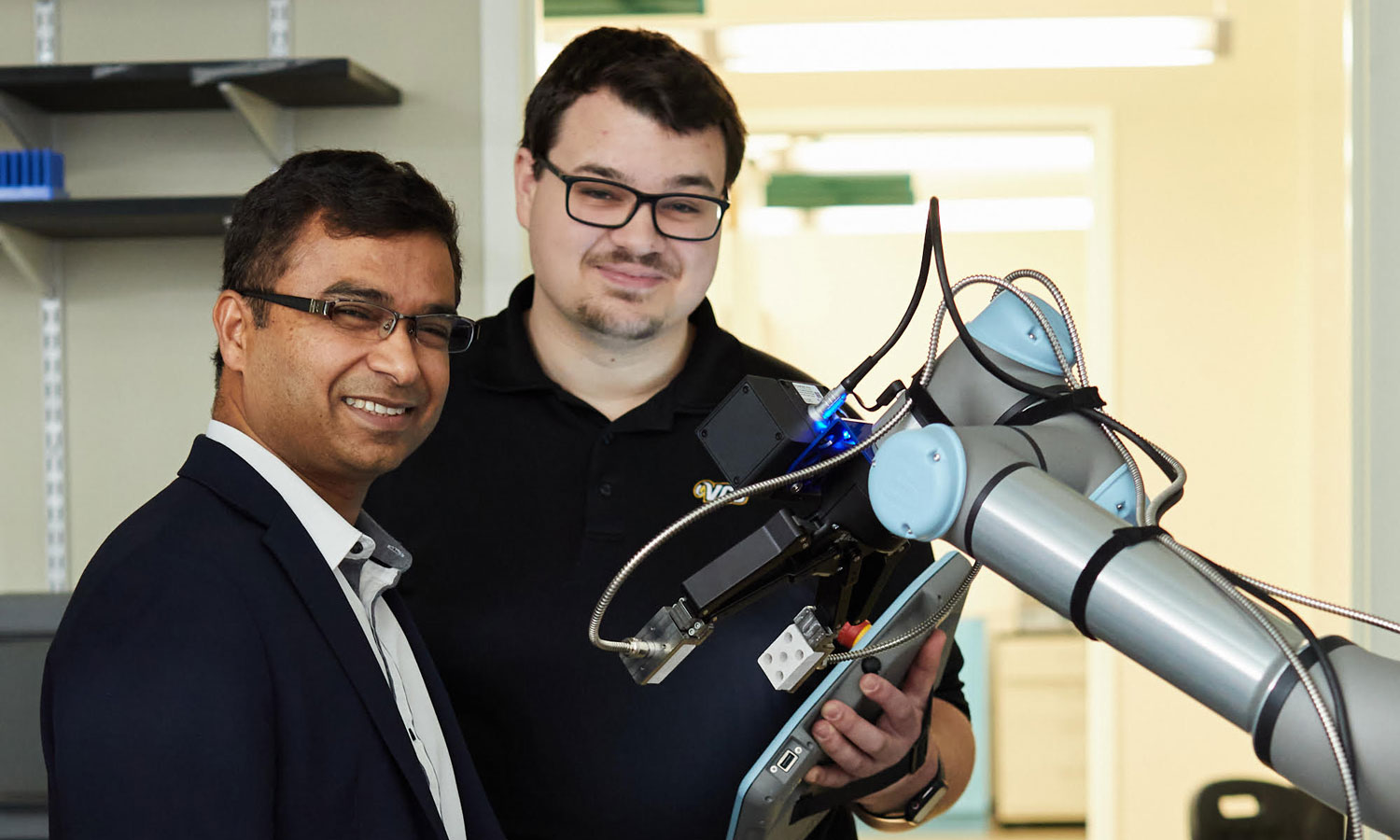Beating the heat with Engineering students’ robotic gripper

The team’s invention was one of the finalists in the 2022 Collegiate Inventors Competition, which notes the gripper is designed to lower production time while reducing the cost of the part- making process.
The formal name for a robotic arm and gripper invented by a team of VCU College of Engineering students is the “Adaptive High-Temperature End Effector.”
And given the robot’s planned role in collaborating with humans during the additive manufacturing process, it’s also called a “cobot.”
“These are designed to work safely, side- by-side with humans,” explains Logan Schorr, a VCU graduate student who helped invent the gripper.
Schorr and fellow students Bradley Johnson and Jesse McFall created the alloy steel gripper with a pair of ceramic casts on its “fingers” that allow the co- bot to handle extremely hot objects during the process of molding metal parts for a wide range of applications.
The team’s invention was one of the finalists in the 2022 Collegiate Inventors Competition, which notes the gripper is designed to lower production time while reducing the cost of the part- making process. At the event, the VCU students’ project competed with inventions from Harvard, Johns Hopkins, the University of California Santa Barbara, and other institutions.
“It was a really cool experience, especially because things like this robot are generally not what you see at those sorts of events,” Schorr says. “A lot of the focus was on agricultural or medical inventions.”
The gripper was the students’ senior capstone project overseen by advisor Ravi Hadimani, Ph.D., who says the invention melds the fields of robotics and additive manufacturing (also known as 3D printing).
“As a mechanical engineering department, we need to be able to use robots in our additive manufacturing. That is the way forward,” says Hadimani, an associate professor of mechanical engineering and director of VCU’s Biomagnetics Laboratory. “Robots will bring a lot of advantages and remove many of the health and safety issues associated with additive manufacturing and auto- mate a large part of that field.”
Hadimani adds the gripper will be used to handle a range of manufactured products, from medical devices to rocket parts made using a 3D metal printer at VCU. VCU TechTransfer and Ventures has been supporting the gripper project and has filed a patent application.
The VCU robot’s specialized gripper can handle and move metal objects heated to temperatures upwards of 1,800 degrees Fahrenheit.
For a human to handle such heat, the part would have to cool down first or be moved using tongs that could create inaccuracies, Schorr says. The gripper could move the part much more quickly without putting a human at risk.
“You still need to get the part from point A to point B,” Schorr says. “With a robot, you’re able to put it exactly in the spot that you need it.”
Categories Faculty Awards, Graduate Student Stories, Mechanical & Nuclear Engineering, Student Stories